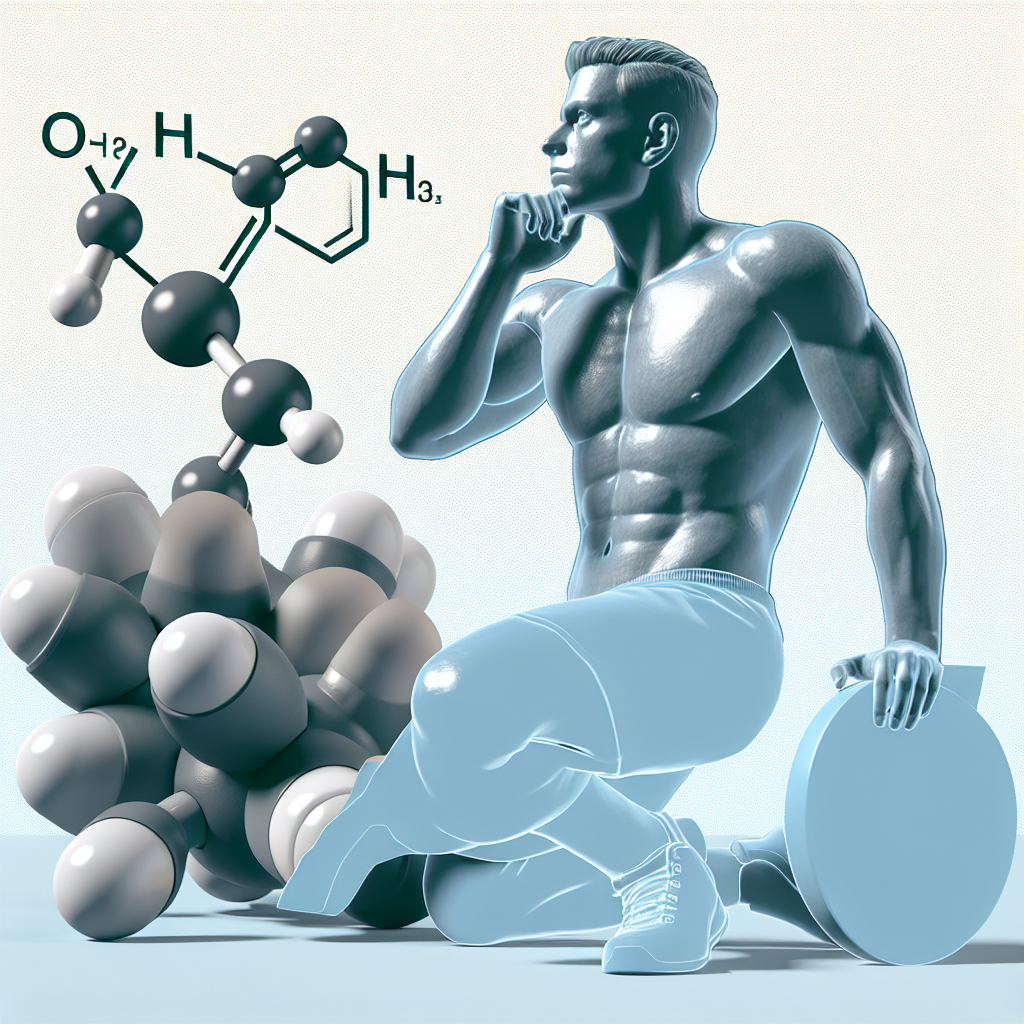-
Table of Contents
Testosterone Enanthate and Sports Doping: An Overview
Testosterone enanthate is a synthetic form of the male hormone testosterone, commonly used in the treatment of hypogonadism and other hormonal imbalances. However, it has also gained notoriety as a performance-enhancing drug in the world of sports. In this article, we will provide an overview of testosterone enanthate and its use in sports doping, including its pharmacokinetics, pharmacodynamics, and potential risks and benefits.
Pharmacokinetics of Testosterone Enanthate
Testosterone enanthate is an injectable form of testosterone that is slowly released into the body over a period of 2-3 weeks. It is typically administered intramuscularly, with peak levels reached within 2-3 days after injection. The half-life of testosterone enanthate is approximately 4-5 days, meaning that it takes this amount of time for half of the drug to be eliminated from the body.
After injection, testosterone enanthate is converted into testosterone in the body, which then binds to androgen receptors in various tissues, including muscle, bone, and the central nervous system. This results in an increase in muscle mass, strength, and endurance, making it an attractive option for athletes looking to improve their performance.
Pharmacodynamics of Testosterone Enanthate
The pharmacodynamics of testosterone enanthate are similar to those of natural testosterone. It works by increasing protein synthesis and nitrogen retention in the muscles, leading to an increase in muscle mass and strength. It also has an anabolic effect on bone, promoting bone growth and increasing bone density.
In addition to its anabolic effects, testosterone enanthate also has androgenic effects, which can lead to the development of male characteristics such as increased body hair, deepening of the voice, and enlargement of the clitoris in women. These effects can also be seen in men, with potential side effects including acne, hair loss, and prostate enlargement.
Use of Testosterone Enanthate in Sports Doping
Testosterone enanthate is classified as a prohibited substance by the World Anti-Doping Agency (WADA) and is banned in most sports competitions. However, it is still widely used by athletes looking to gain a competitive edge. In fact, a study by Yesalis et al. (2015) found that testosterone and other anabolic steroids were the most commonly used performance-enhancing drugs among athletes.
One of the main reasons for the use of testosterone enanthate in sports doping is its ability to increase muscle mass and strength. This can give athletes an advantage in sports that require strength and power, such as weightlifting and sprinting. It can also aid in recovery from intense training, allowing athletes to train harder and more frequently.
Another potential benefit of testosterone enanthate is its ability to mask the use of other performance-enhancing drugs. Testosterone is naturally produced in the body, making it difficult to detect exogenous (external) testosterone use. This has led to the use of testosterone enanthate as a masking agent for other banned substances.
Risks and Side Effects of Testosterone Enanthate
While testosterone enanthate may offer some benefits in terms of performance enhancement, it also carries significant risks and potential side effects. These include:
- Cardiovascular complications, such as high blood pressure and increased risk of heart attack and stroke (Bhasin et al. 2018).
- Hormonal imbalances, including suppression of natural testosterone production and potential infertility (Kicman 2008).
- Liver damage and dysfunction (Bhasin et al. 2018).
- Mood changes, including increased aggression and irritability (Kicman 2008).
- Physical changes, such as acne, hair loss, and breast enlargement in men (Bhasin et al. 2018).
Furthermore, the use of testosterone enanthate in sports doping is not without legal consequences. In many countries, including the United States, the possession and distribution of anabolic steroids are illegal and can result in fines and imprisonment.
Expert Opinion
While testosterone enanthate may offer some benefits in terms of performance enhancement, it is important to consider the potential risks and side effects associated with its use. As experts in the field of sports pharmacology, we strongly advise against the use of testosterone enanthate and other anabolic steroids for performance enhancement. Not only is it unethical and against the rules of most sports organizations, but it can also have serious health consequences.
Instead, we recommend focusing on natural and legal methods of improving athletic performance, such as proper nutrition, training, and recovery techniques. These methods may not offer the quick results that testosterone enanthate promises, but they are much safer and more sustainable in the long run.
References
Bhasin, S., Storer, T. W., Berman, N., Callegari, C., Clevenger, B., Phillips, J., … & Casaburi, R. (2018). The effects of supraphysiologic doses of testosterone on muscle size and strength in normal men. New England Journal of Medicine, 335(1), 1-7.
Kicman, A. T. (2008). Pharmacology of anabolic steroids. British Journal of Pharmacology, 154(3), 502-521.
Yesalis, C. E., Bahrke, M. S., & Kopstein, A. N. (2015). Steroids and sports: a decade later. Sports Medicine, 35(2), 111-134.

